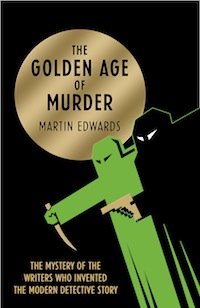Britain’s Golden Age of detective fiction produced some of the greatest and most enduring crime writers, including Agatha Christie, Margery Allingham and Dorothy L Sayers. “The crime novel, like the world itself, is ruled by the English,” said Bertolt Brecht during this period. For readers who want to know more about the literary empire, there are plenty of revelations in Martin Edwards’s ambitious history of crime fiction between the wars.
Edwards focuses on the membership of the Detection Club, a social network of crime writers first set up in 1930. An author, editor and also a Detection Club member, Edwards proves to be a tenacious investigator as he explores the mysteries surrounding these authors, and he provides an illuminating analysis of dozens of major novels and short stories without resorting to spoilers.
The key figures in the club were Sayers, Christie and Anthony Berkeley, an author who’s now less well known, perhaps in part because of his various pseudonyms. His novel Before the Fact was filmed by Alfred Hitchcock in 1941 as Suspicion, and Berkeley also had a major influence on the development of crime fiction as a critic (under the name Frances Iles). But for all his talent, he was also the worst kind of self-important author and appeared to fall out with almost everyone. Still, he makes for a fascinating biographical study.
Sayers and Christie emerge as more likeable characters, though they were not without their demons. The creator of Lord Peter Wimsey, Sayers was a forthright intellectual whose career in advertising (she was involved in the Guinness toucan) came in useful when she promoted her novels and the Detection Club. But Sayers lived in fear of anyone finding out about her illegitimate son, and she never even confided her secret in friends and fellow authors like Helen Simpson.
Christie was a self-effacing personality and not naturally clubbable, yet she was always involved in the Detection Club and ultimately became its president for almost 20 years. Of course, Christie was the original gone girl – her 11-day disappearance in 1926 was a media sensation. By then she had already made an impact with the landmark Poirot novel The Murder of Roger Ackroyd (voted the CWA’s best crime novel ever), and Edwards dismisses any suggestion of a publicity stunt.
Even when she was the world’s biggest-selling author (estimates range from two to four billion), Christie was never too grand for the crime writer’s club, which eventually had its own premises in Gerrard Street, Soho. In an era before social media, it was a support network for authors – women were well represented – to get together and discuss true crime, puzzles and their joint Detection Club novels The Floating Admiral and Ask a Policeman. During the initiation ceremony for new members, pride of place was given to a human skull known as Eric, who lit up with red eyes.
As well as exploring these writers and their works, Edwards also conveys the historical context of the 1930s economic slump in which readers embraced the escapism of detective fiction. He also makes a strong case for those authors who explored new territory, such as Arthur Morrison in The Dorrington Deed-Box, which featured a murderer not unlike Tom Ripley. Henry Wade’s Inspector John Poole is credited as the first of the ‘gentleman cops’, while Berkeley was a pioneer of serial killers and criminal psychology. True crime cases were a major influence on many authors, though there were constraints on the depiction of sex and violence.
Dozens of Detection Club members are pictured in the front of this volume, and Edwards’s prodigious account gives them all the attention they deserve. Some Golden Age authors were not actually English – John Dickson Carr was an American expat who became a master of the locked room mystery. Many were writing crime fiction on the side, including the academic John Stewart (as Michael Innes) and the poet Cecil Day-Lewis, whose crime novels under the pen name Nicholas Blake include The Beast Must Die.
It’s sometimes hard to keep up as Edwards casts his critical eye back and forth between numerous authors, but his enthusiasm and endless curiosity keep you absorbed in the classic crime era. The Golden Age of a Murder is a lively and erudite study that every crime fan should own.
Read our feature on Books to Die For, a collection of essays by crime writers on the authors who inspired them.
HarperCollins
Print/Kindle/iBook
£5.18
CFL Rating: 5 Stars








